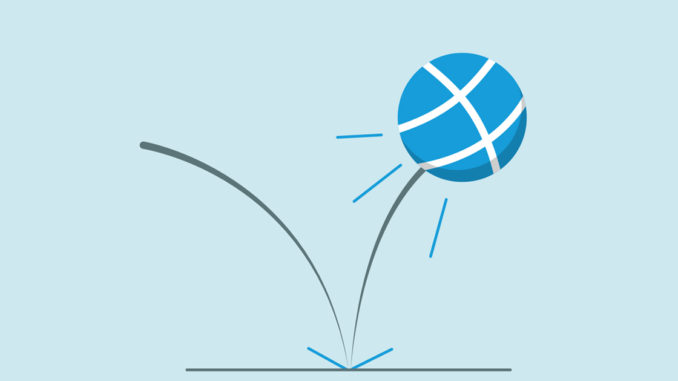
What is a website’s bounce rate? What does it mean? And how do I improve my website’s bounce rate? These are all common questions that a client has when receiving our digital marketing reports and questions that you may have when you are thinking of investing in a website for your business. This blog will define exactly what bounce rate means and how you can ensure that your website produces a low bounce rate (low is good, high is bad).
What is bounce rate?
Bounce rate refers to the percentage of users who arrive at a website and click away from the website after viewing only one page. The ideal user journey for most websites would be: User searches a term – User clicks through to your website through a paid ad or organic search result – User lands on a well designed page that is relevant to their search term – User completes a goal through well designed and well placed calls to action that encourage a sale or other goal – And again and again until the end of time. Unfortunately, this is not always the case. The two core reasons why you would have a high bounce rate is that you are either not attracting the right users to your site or the users you do attract are not having a good experience when they are on your site.
How can I improve my website’s bounce rate?
A high bounce rate is undesirable and there are many things that can be done to improve it. Web users typically spend less than 15 seconds on a website before deciding to stay or click away. This means there’s very little time to waste in getting your key message across to the user; your website needs to concisely meet the needs of your user and guide them to your end goal. There are many ways of meeting a user’s needs and subsequently improving your website’s bounce rate.
Users make up their mind about a website within the first few seconds. If they have to spend more than a few seconds waiting for a website to load then they will very quickly click away and visit another site instead. If you want to know how fast your website is then tools such as Pingdom and Google Page Speed can provide great insight into the speed of your website. If your website isn’t performing as fast as you would like then there are many ways to improve site speed. Image optimisation, better caching and switching hosting provider are good starting points in the quest for a faster website.
When a user lands on a website there is a certain area of your website that they will immediately see before they scroll. In this small space (or big space depending on the size of their screen) it is important to have at least one call to action that is encouraging the user to do what you want them to do. Whether that is to make a purchase, ask a question or get in touch. As users make their decision within seconds of visiting a site before even scrolling to see the rest of the site, it is key to make use of prominent calls to action that stand out, legible and encouraging.
With A/B testing you can use different strategies on more than one page and see which one performs the best. By creating different landing pages, targeting different audiences, keywords, etc. you can maximise your conversion rate.
Use testimonials and reviews that backup your claim of being the best or experts in your field. Make these testimonials interesting by adding audio, video and illustrations that project a success story that is captivating to read.

Captivating your users attention is key to reducing bounce rate. Another way to do this is by using high quality imagery, which has proven to be effective in retaining website users.
The above 5 points are quick and easy ways to improve your website’s bounce rate. By making these small changes you can see drastic improvements to your website’s conversion rate as you grab your users’ attention. If you would like help with any of the above points, would like to know more about improving your websites bounce rate, or just fancy a conversation with a website expert then get in touch with us today. Also, don’t forget to follow us on Instagram and Facebook, to receive updates on our latest blogs, tips and news.
